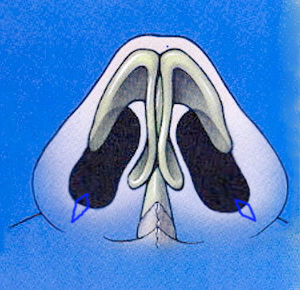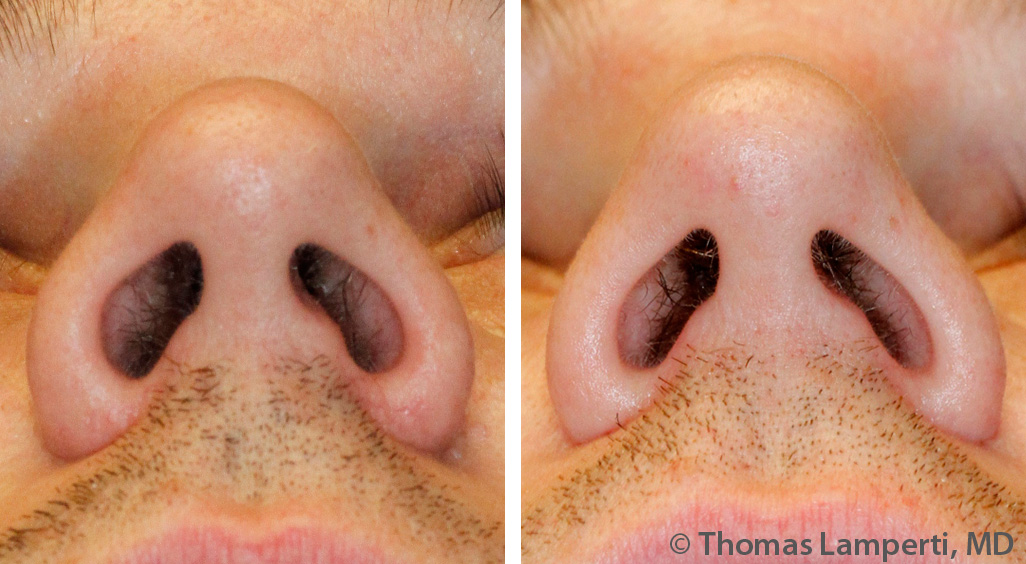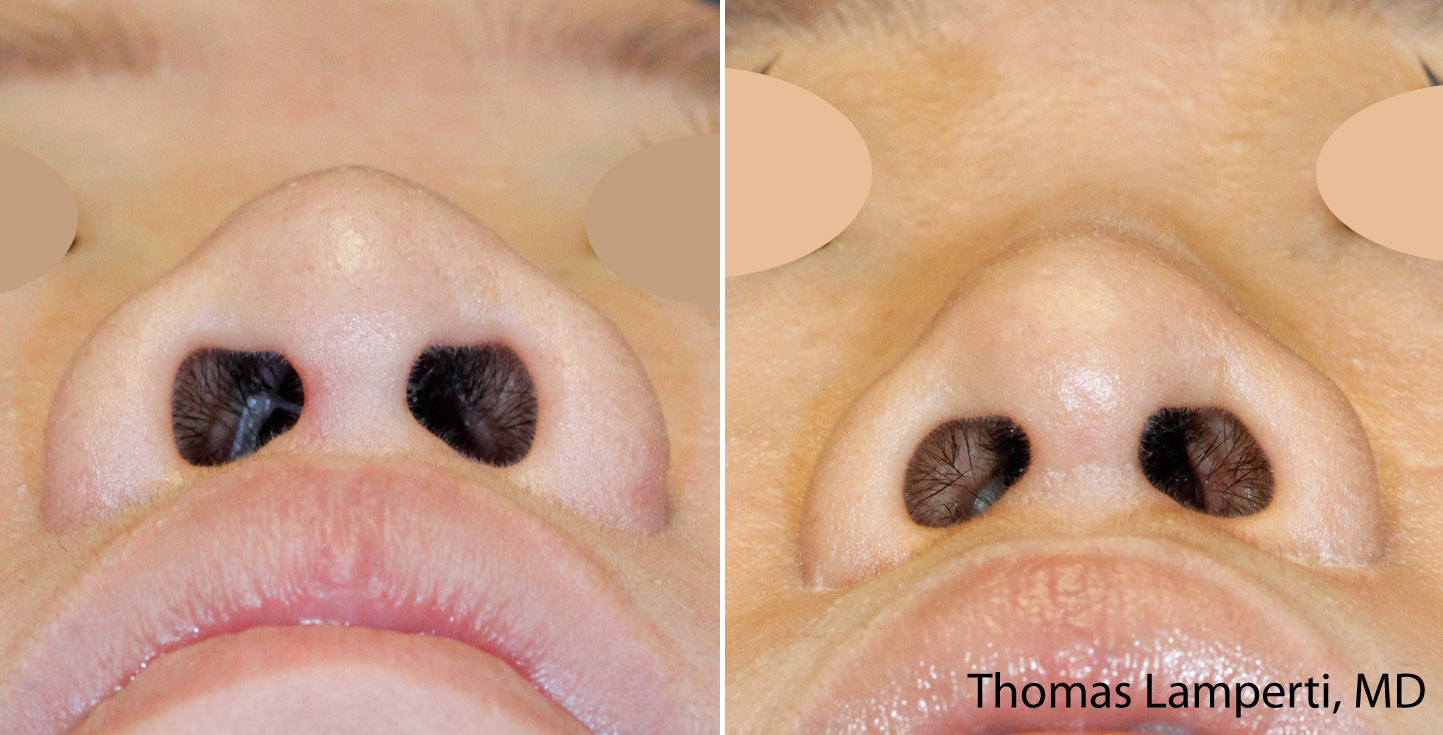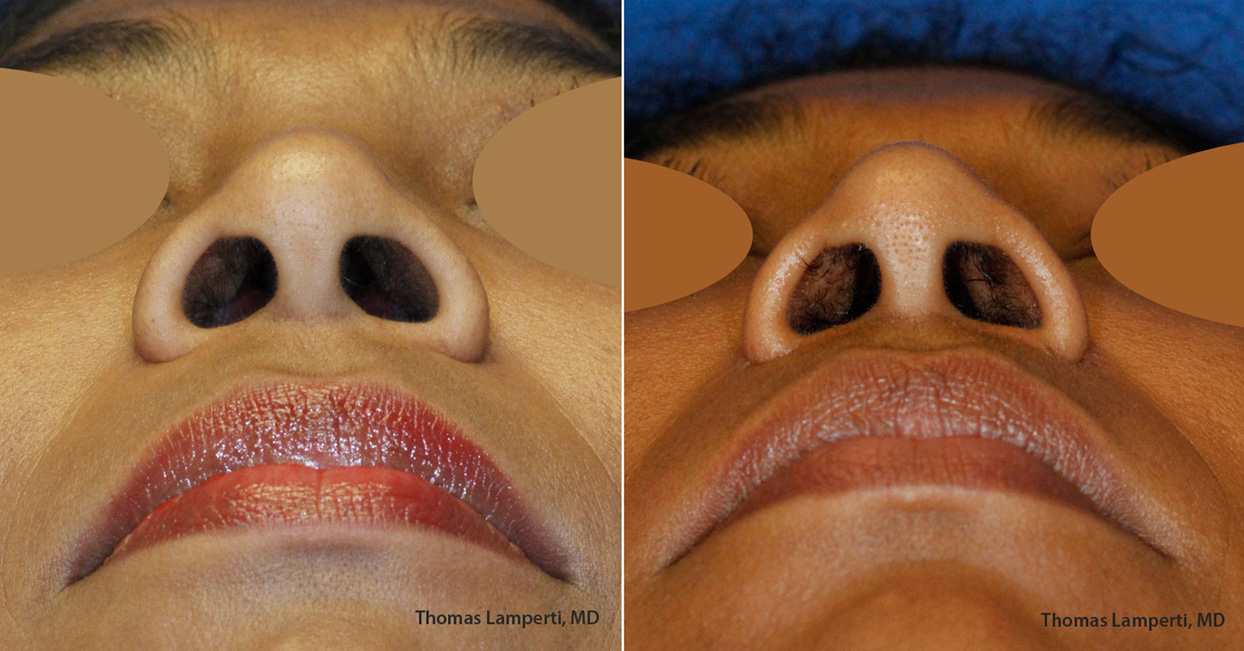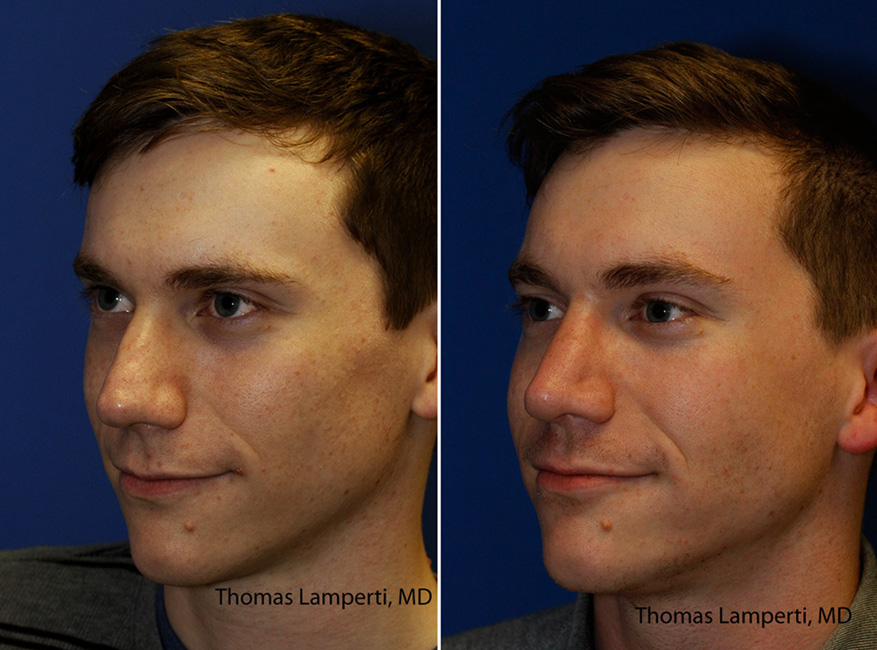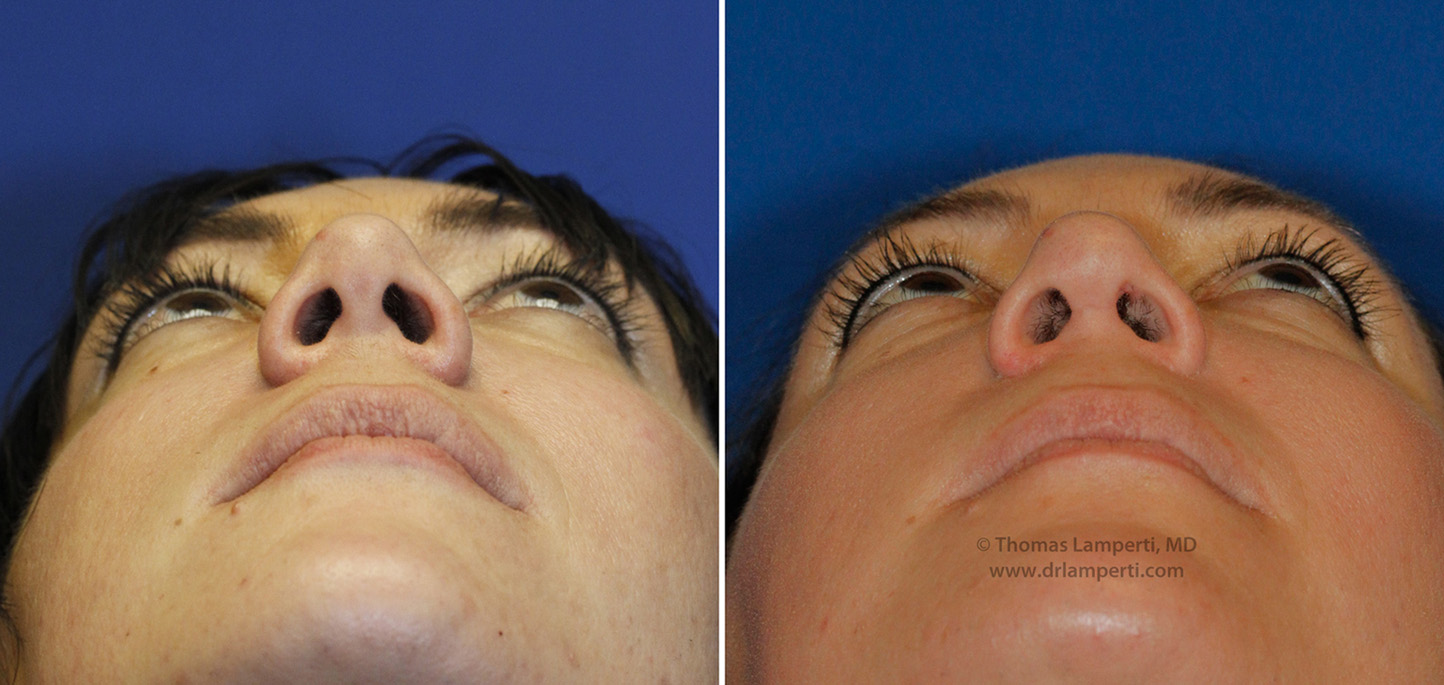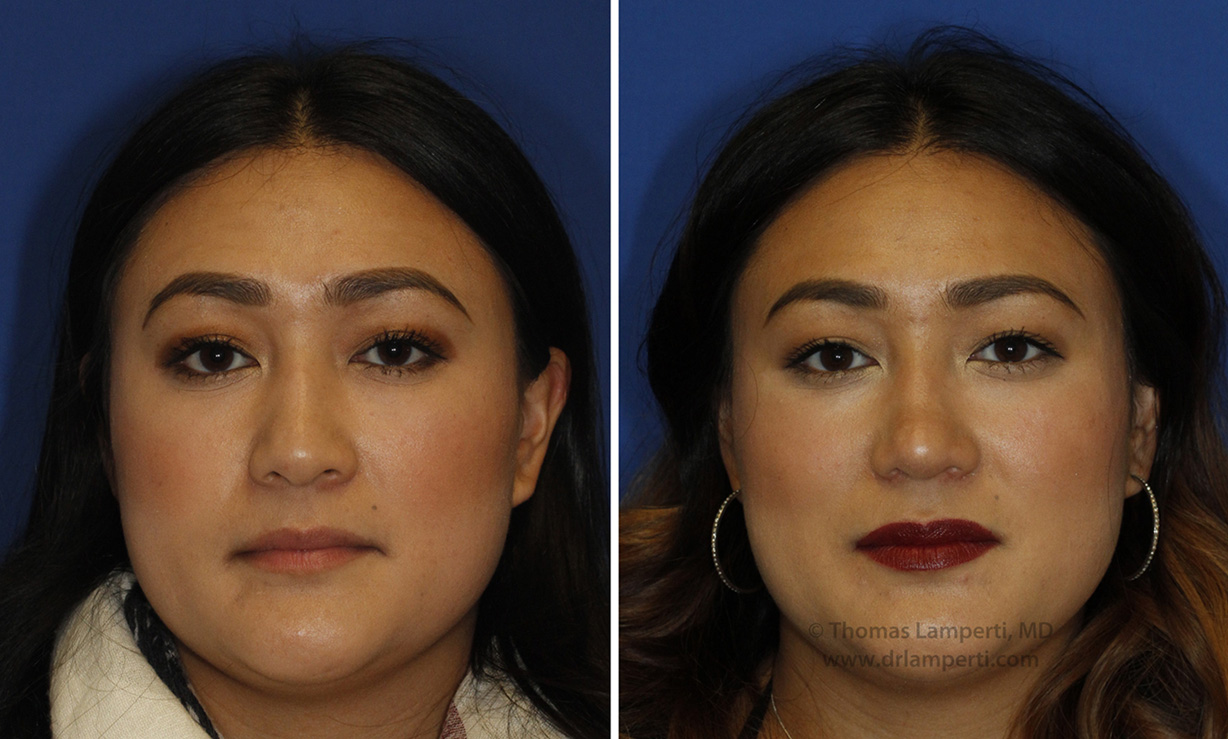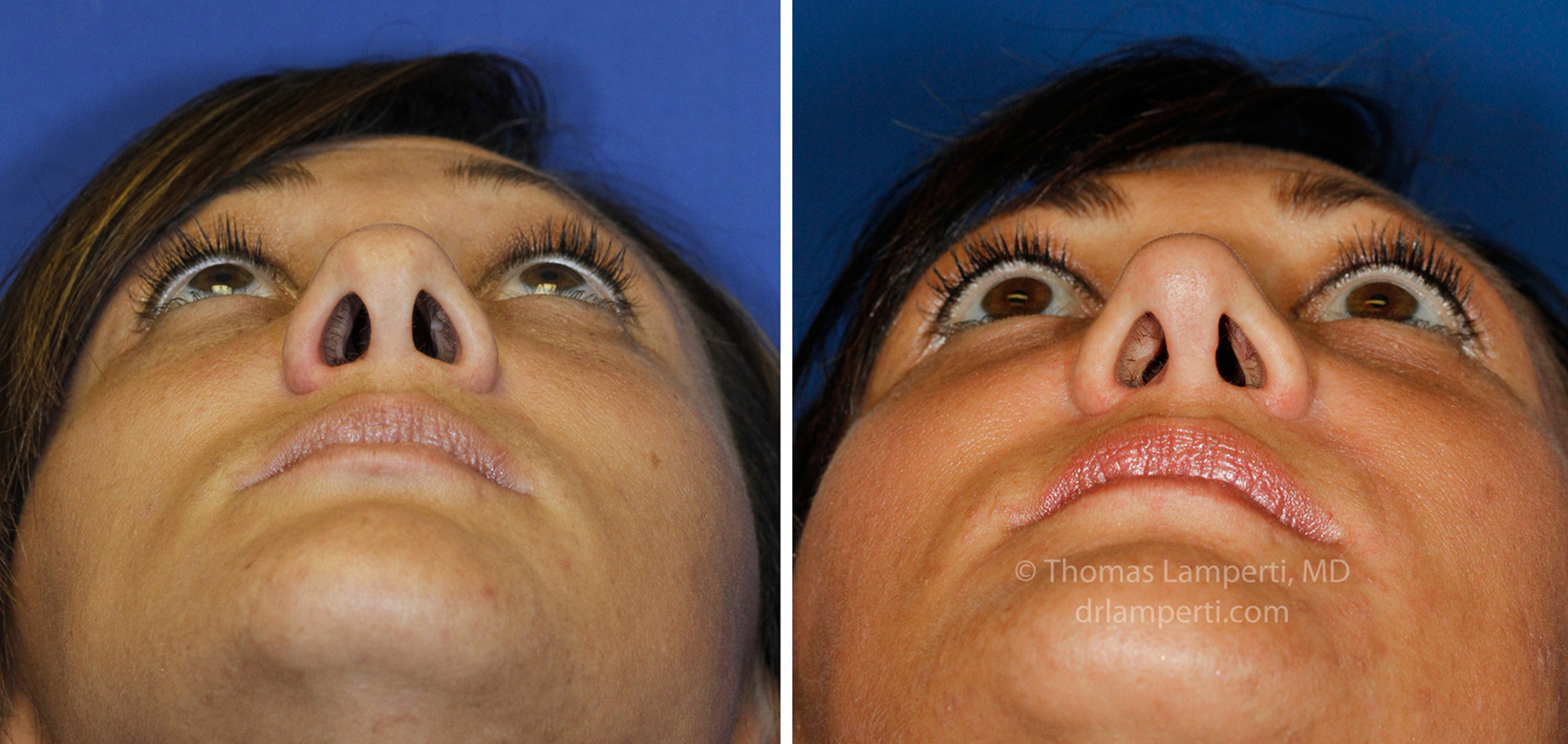Wide Nostrils and Nasal Tip
A wide tip can be related to a wide nasal base or due to a broad, bulbous tip. Several techniques are available to slim wide, flared or thick nostrils using alar base reduction rhinoplasty.
Nostril Anatomy
Many people are surprised to find out that the outer portion of the nostril region (also called the ala) does not have any cartilage in it. This schematic outlines the anatomy very well:
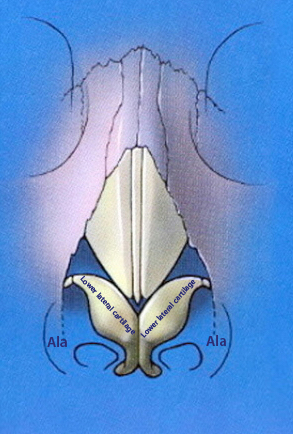
The outer alar margin and sidewall are made of fibro-fatty soft tissue. People with thicker ala don't have thicker cartilage, they just have more of this fibro-fatty tissue. This can create a more flared or wide appearance to the nasal base.
How to make the nostrils less wide with wedge excisions
A common method to reduce the width of the nostrils is to perform a wedge excision (also called Weir excisions) of alar soft tissue. There are two possible styles of wedge excisions. The first maintains the inner nostril circumference as seen in the schematic below:
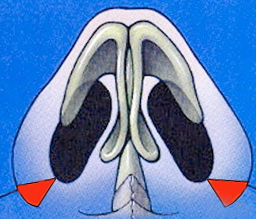
The second technique includes the excision of some internal nostril skin to further reduce the nostril size:
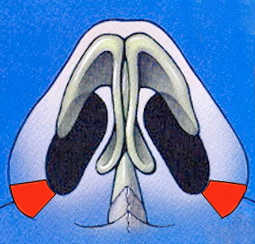
The benefits of the wedge excision technique is that the resulting scar is hidden in the natural crease that exists where the ala meets the cheek. This incision is typically closed with at least two layers of sutures. A deep suture layer involves dissolveable sutures, whereas the outer skin sutures are usually trimmed 1 to 2 weeks after surgery.
How to narrow the nostrils with a nasal sill excision
An additional method of reducing nostril width is to excise skin from the floor of the nostril (also called the nasal sill). This technique is especially useful in patients with a wide nasal floor and it can also be used to treat flared nostrils. Various incision shapes can be designed including a diamond, triangle, or rectangle of tissue.
Great care must be taken in suturing the area closed. It can be harder to hide the resulting scar, though some people do have an already existing crease where the ala meet the nasal sill where an incision can be placed. The schematic below shows how a diamond shaped incision can be used.
How to narrow the nostrils with a Y to V advancement technique
The last method of narrowing the nostril width is the Y-V advancement technique. This method involves placement of an incision around the alar insertion inside the nostril. The incision is placed just below the natural crease in the upper lip and then wraps around the inner nostril insertion point to then travel back around deeper inside the nostril. An additional incision is then placed across the nostril floor (forming the stem of the Y). The figure below shows the planned incisions for a right side nostril reduction in blue:
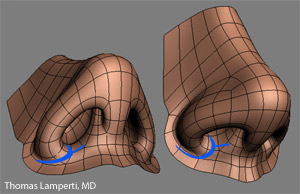
An optional crescent of skin can be removed from the tip of the U-shaped nostril insertion if there is an especially wide nostril sill. Otherwise, the alar insertion point is moved in toward the columella along the horizontal incision that was made in the nostril floor. As seen in the following schematic the end result is that the nostril and alar sidewall are moved inward making the nose less wide and flared.
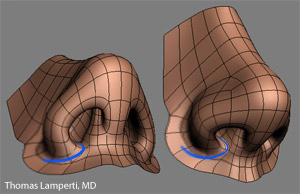
The benefits of this technique is that very little, if any, skin is actually removed and the technique is technically reversible. Also the scar location just under the nostril and inside the nose hides very well and often much better than scars located further out in the alar facial groove where they are placed for the wedge excision technique.
Combined wedge excision with and nasal sill excision to narrow the nostrils
In some instances it is best to combine a wedge excision with nasal sill excision to appropriately narrow the nostril area. This typically occurs when significant narrowing is desired.
Management of the alar scar
The skin around the nostrils has abundant oil glands and in some cases it is recommended to inject dilute steroid in the scar after surgery to improve the appearance of the scar. This is the case when the scar becomes overly thickened or hypertrophic. In other cases the scar can be further minimized by performing dermabrasion (sanding) about two to three months after surgery. Dermabrasion can be done in the office with local numbing medicine. It acts to resurface the scar by removing the outer layers of skin cells and allowing new skin to grow in the area which creates a smoother appearance.
Before and After Nostril Reduction Rhinoplasty Photos
The photos below show some before and after alar base reduction results: 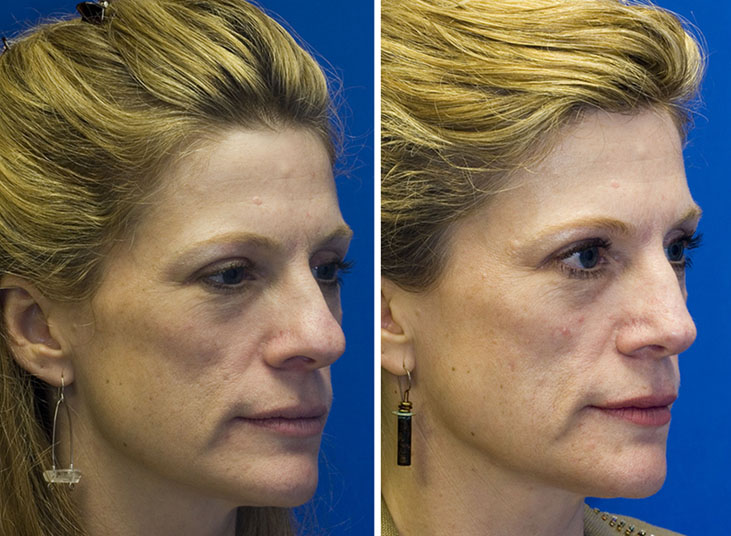
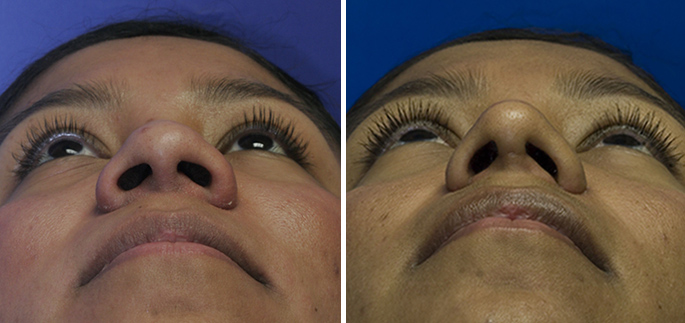
At my recent High School reunion someone told me that I had a perfect nose thanks to my revision rhinoplasty with you.
PM - Anchorage, AK View More Patient Testimonials ›Schedule your In-Office or Virtual Consultation with Dr. Lamperti
Thomas Lamperti, MD personally performs all in-office and virtual consultations where you will be able to learn about your customized cosmetic or reconstructive surgery options.

